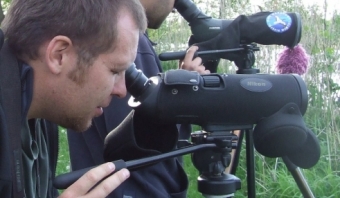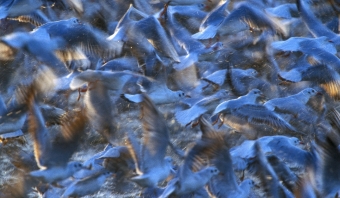PRZECZYTAJ RÓWNIEŻ

Rzut okiem na birdwatching
Wraz z rozwojem cywilizacyjnym i technologicznym społeczeństw, tworzący je ludzie coraz chętniej w wolnym czasie uciekają od (...)
System birdwatchingu – rozwiązania sprzyjające obserwacji przyrody
Dolina Baryczy. Przewodnik po niezwykłościach przyrody
Informacja prasowa z konferencji w Dolinie Baryczy
Informacja prasowa z konferencji w Dolinie Baryczy - czII
System birdwatchingu – rozwiązania sprzyjające obserwacji przyrody
Dolina Baryczy. Przewodnik po niezwykłościach przyrody
Informacja prasowa z konferencji w Dolinie Baryczy
Informacja prasowa z konferencji w Dolinie Baryczy - czII

Bird paradise
Area of the Barycz Valley, particularly of the “Barycz Valley” Landscape Park, is a true paradise for ornithologists and enthusiasts of birdwatching
Feathery diversity
In the Lower Silesia part of the park, occurrence of as many as 297 bird specieswas recorded, including 172 ones breeding at this site (presently or in the past). Great Poland shows only slightly lower amounts, with 260 identified species. In the “Milicz Ponds” reserve alone, 257 bird species were observed, comprising 137 ones regularly breeding here. Within this group, nearly 60 species are water and marsh birds.
Many of them, e.g. greylag geese,bean geese, cranes andgrey herons, are found abundantly in the area. An interesting bird, inhabiting tree-covered dykes and islands, is the penduline tit, building intricately woven nests, hanging from the ends of branches of willows and birches, usually above the water surface. Whooper swans are becoming more frequent at the site, particularly in their migration period. Similarly the Bewick’s swans, regularly arriving in the Barycz Valley during their spring and autumn flights.
As for birds of prey, groups of even several tens of white-tailed eagles may be observed by the ponds in the autumn.Young birds from beyond the valley are attracted by the abundance of easily accessible food, especially during fish harvesting.In other seasons, white-tailed eagles are encountered rather infrequently. Although the predator hunts in the ponds, it builds its nests at the tops of the highest trees, in the depths of hardly accessible forests.
Among other birds of prey found in the ponds, marsh harrier is worth mentioning. These birds may be observed from the beginning of April, while they mate or build their nests. Acrobatics of the males, carried out at great heights during song display flights, are particularly impressive.
Observations are possible basically throughout the entire year, however the most attractive season is spring, when birds form pairs and trees are still not covered with leaves.Autumn provides also an opportunity to observe bird flights. Moreover, in the late spring and summer the largest ponds of the reserve become moulting sites, at which swans, greylag geese and ducks gather for feather change.
Best sites for birdwatching are broad ponds with reed islands. As the greatest observation points, naturalists name theStary, Jeleni III, Mewi Duży, Słoneczny and Grabownica ponds.
Note!Remember that entrance to the reserve, apart from public roads and tourist routes, requires a written permission granted by the Regional Nature Conservator. You should also pay attention not to disturb the fish farming areas.
Such limitations do not apply to the recently opened educational path among the Krośnice ponds. This area is located beyond the reserve and, thanks to an agreement between the local authorities and the “Milicz Ponds” company, tourists and enthusiasts of nature may feel free to spend their time also within the fish farming areas. October and November make an exception, as this is the time of fish harvesting and hikers should consult their routes with the fishermen.



 archiwum obserwacji
archiwum obserwacji